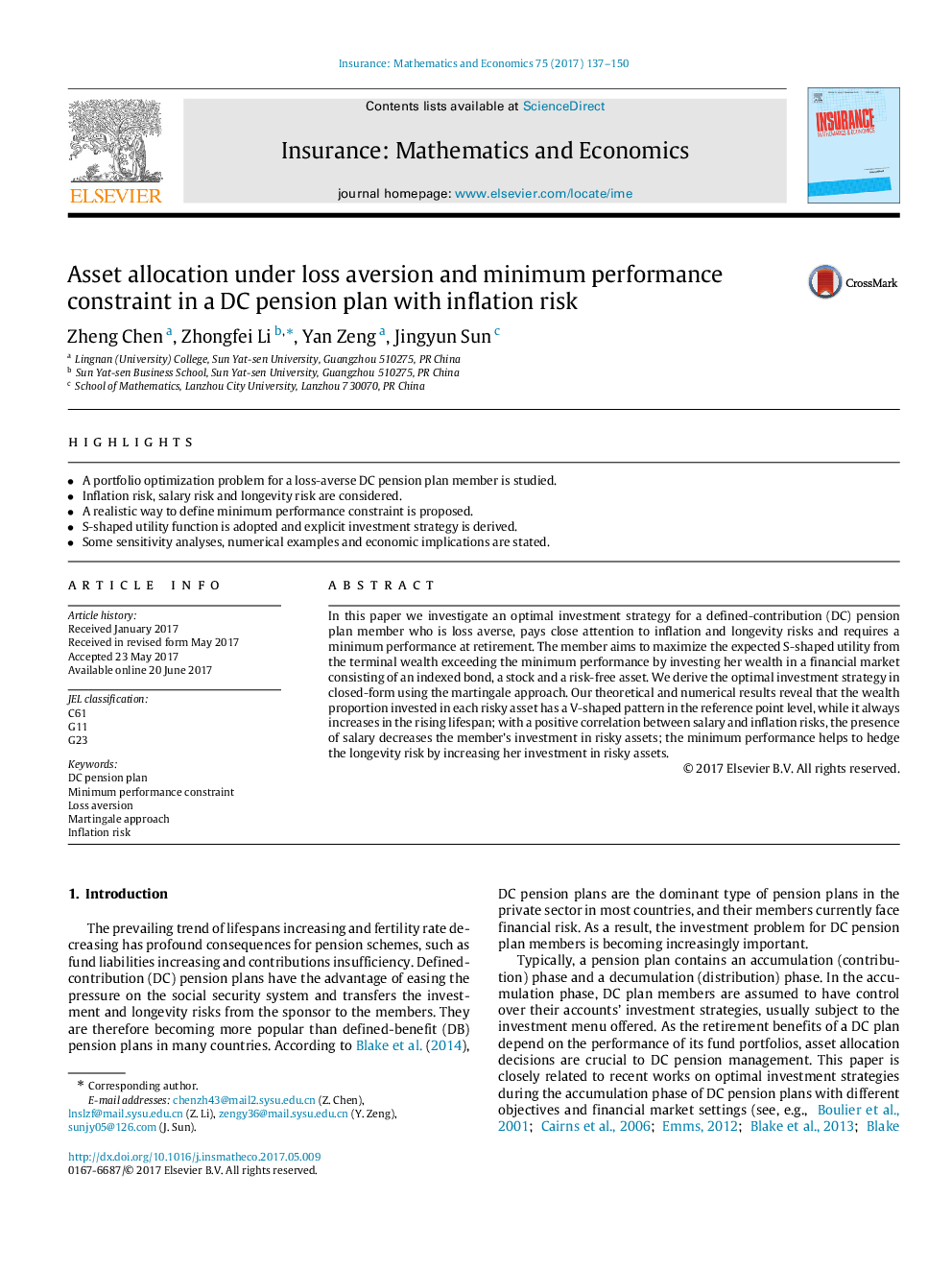| Article ID | Journal | Published Year | Pages | File Type |
|---|---|---|---|---|
| 5076159 | Insurance: Mathematics and Economics | 2017 | 14 Pages |
â¢A portfolio optimization problem for a loss-averse DC pension plan member is studied.â¢Inflation risk, salary risk and longevity risk are considered.â¢A realistic way to define minimum performance constraint is proposed.â¢S-shaped utility function is adopted and explicit investment strategy is derived.â¢Some sensitivity analyses, numerical examples and economic implications are stated.
In this paper we investigate an optimal investment strategy for a defined-contribution (DC) pension plan member who is loss averse, pays close attention to inflation and longevity risks and requires a minimum performance at retirement. The member aims to maximize the expected S-shaped utility from the terminal wealth exceeding the minimum performance by investing her wealth in a financial market consisting of an indexed bond, a stock and a risk-free asset. We derive the optimal investment strategy in closed-form using the martingale approach. Our theoretical and numerical results reveal that the wealth proportion invested in each risky asset has a V-shaped pattern in the reference point level, while it always increases in the rising lifespan; with a positive correlation between salary and inflation risks, the presence of salary decreases the member's investment in risky assets; the minimum performance helps to hedge the longevity risk by increasing her investment in risky assets.
